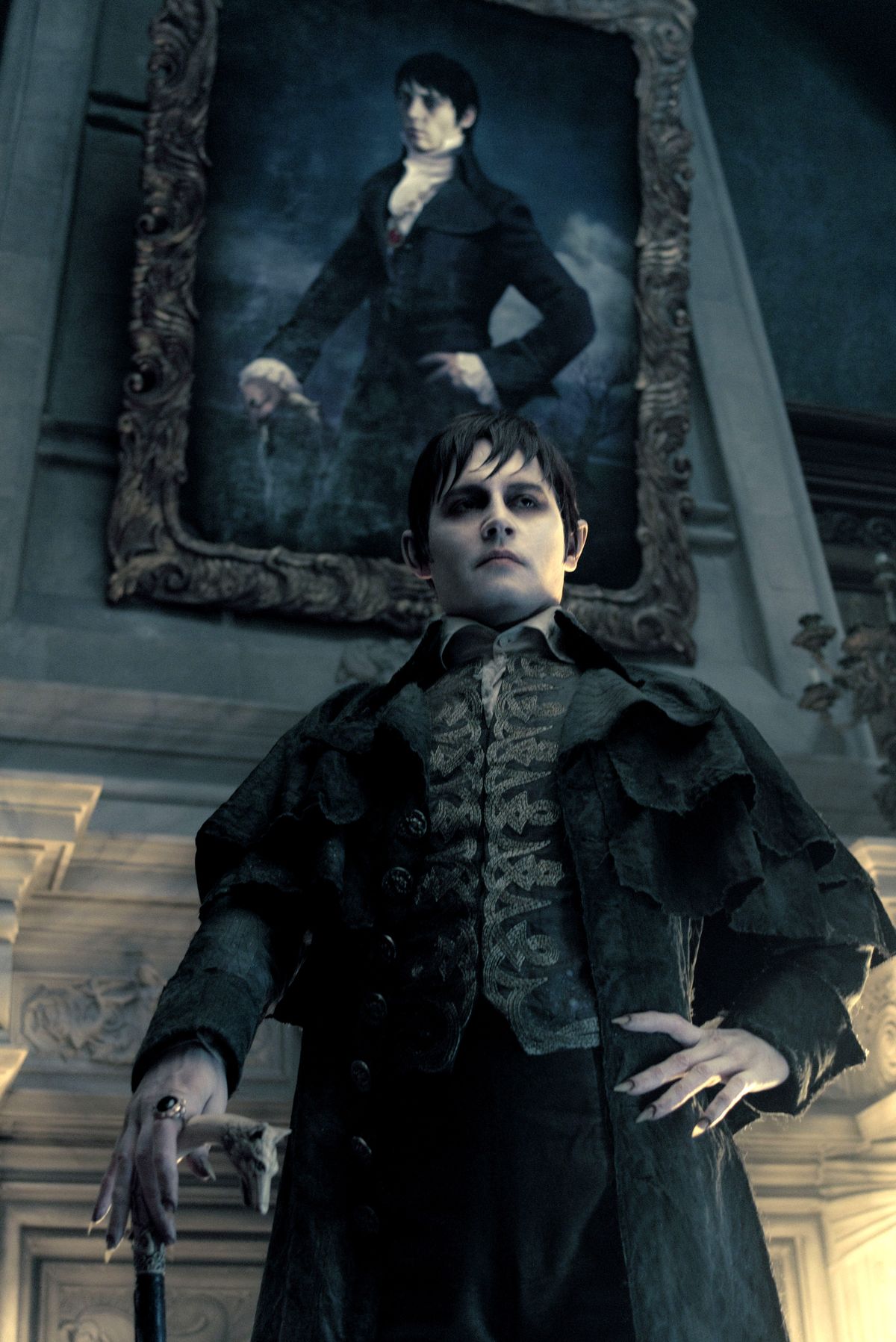Light ‘Shadows’
Tim Burton mixes vampires, nostalgia, comedy while remolding TV phenomenon

A generation (or two) before “True Blood,” “Vampire Diaries” and even “Buffy the Vampire Slayer,” little children ran home from school to watch a soap opera – a vampire soap opera, whose theme music still echoes in the minds of those damaged, gothic-minded tykes. It was an age without TiVo, Hulu or even VHS, so they had to be home by 4 p.m., lest they miss the latest weird goings-on in the accursed village of Collinsport.
“Dark Shadows” was a phenomenon – the first soap to go supernatural, a daytime dose of dread and camp. Star Jonathan Frid – the Canadian actor who died last month, at age 87 – became a household name as Barnabas Collins, the resident ghoul of the Collinwood mansion. The show lasted from 1966 to 1971 but left a lasting impression – notably, on Tim Burton and Johnny Depp, whose resurrected “Dark Shadows” opens in theaters today.
Starring Depp, Eva Green, Helena Bonham Carter, Chloe Grace Moretz, Michelle Pfeiffer, Jonny Lee Miller and Jackie Earle Haley, “Dark Shadows” opens, fittingly, in 1972, with the discovery of Barnabas’ ironclad coffin in a construction pit outside Collinsport. Freed from his casket and chains, Barnabas promptly kills everyone in sight and makes his way back to Collinwood, where he reunites with the surprised caretaker Willie (Haley). In the original series, he had awakened the slumbering vampire Barnabas while looking for the family jewels beneath the mansion (all this gets revived in the remake).
As he did in the TV series, Barnabas passes himself off as the family’s strange relation from England – although there are some who know the truth, most critically Angelique Bouchard (Green), Collinsport’s leading citizen, seafood mogul, spurned lover and the witch who originally turned Barnabas into a vampire and buried him alive, two centuries earlier (which may contradict the TV show, but so it goes).
For Green, Angelique is just the latest in a career of playing extreme women – from the erotic provocateur of Bernardo Bertolucci’s “The Dreamers” (2003) to the mad schoolteacher of “Cracks” (2011) – though she was initially afraid Angelique might be too far over the top. “I knew Johnny would be going big and what he does is this kind of German Expressionist thing,” she said. “As his enemy, I knew I’d have to be his equal so it was a concern – but also a great opportunity to be able to show this side of myself, really cuckoo.”
She also sees the movie as being in line with Burton’s work, which has always been about societal outliers, be they Batman, Beetlejuice, Ed Wood or Willie Wonka. “He’s always about the outcast, the misunderstood outsider,” Green said of her director. “And Angelique is misunderstand, too. She’s not just a cartoon character.”
Who is “Dark Shadows” for? The ongoing conceit within the film is its relentless parade of verbal and visual gags about the ’70s, from lava lamps to The Carpenters (“Reveal yourself, tiny songstress!” Barnabas commands the television, where Karen Carpenter is crooning “Top of the World”).
Haley, who was a ’70s child star (“The Bad News Bears”), provides a kind of sight gag himself (even though, after 15 years away from Hollywood, he earned an Oscar nomination for “Little Children” in 2006). He said he wasn’t an original “Dark Shadows” watcher, but “my wife was one of the kids who ran home from school to watch it. And I have a buddy who was so excited when he heard I was playing Willie, he said, ‘Remember my cat Barnabas? Where do you think I got the name?’ ”
Haley said working on “Dark Shadows” meant “total submersion not just into the ’70s but the gothic world of Tim Burton.”
What seems to be a quaint Maine fishing village is actually four square blocks created over a water tank at London’s Pinewood Studios. Haley said the set decoration was so detailed, and so thorough, it was like a trip back in time.
For his co-star Moretz, the time only amounted to a few months. “The funny thing was, I’ve shot the last two years in London, and I love London, but when I read the script, I said, ‘Oh cool, a seaport town in Maine,’ ” said the actress, whose recent work has included “Let Me In” and “Hugo.” “Then I was told, ‘Actually, we’re shooting in Pinewood,’ and I was going back again.”
Though Moretz is only 15, her character, the incurably teenage Carolyn Stoddard, also has something ineffably ’70s about her. “Yeah,” the actress agreed, “she’s got this totally Woodstocky kind of ’70s vibe, but at the same time what you think is teenage angst turns out to be …”
One shouldn’t say. But Moretz does, in her fashion, link up the various generations Burton is trying to put the bite on, via his combination of vampires, nostalgia, high comedy and camp: Her mother, the actress said, provided her a model for creating a ’70s style, and also inspired in her a love of the era.
“I’ve always been a fanatic about the ’70s,” she said. In fact, her mother and acting-coach brother Trevor knew she’d be so excited when she learned she was doing “Dark Shadows” that they waited till the deal was closed, and wound up telling her at the end of a flight. “My brother looked at me while we were taxiing and said, ‘I don’t want you to freak you out, but Tim Burton wants you to be in ‘Dark Shadows,’ at which point I shrieked. The whole plane looked at me and thought ‘What’s wrong with this girl?’ ”
The young actress was so worked up she did something Barnabas Collins never would have understood: She left her iPad behind on the airplane.